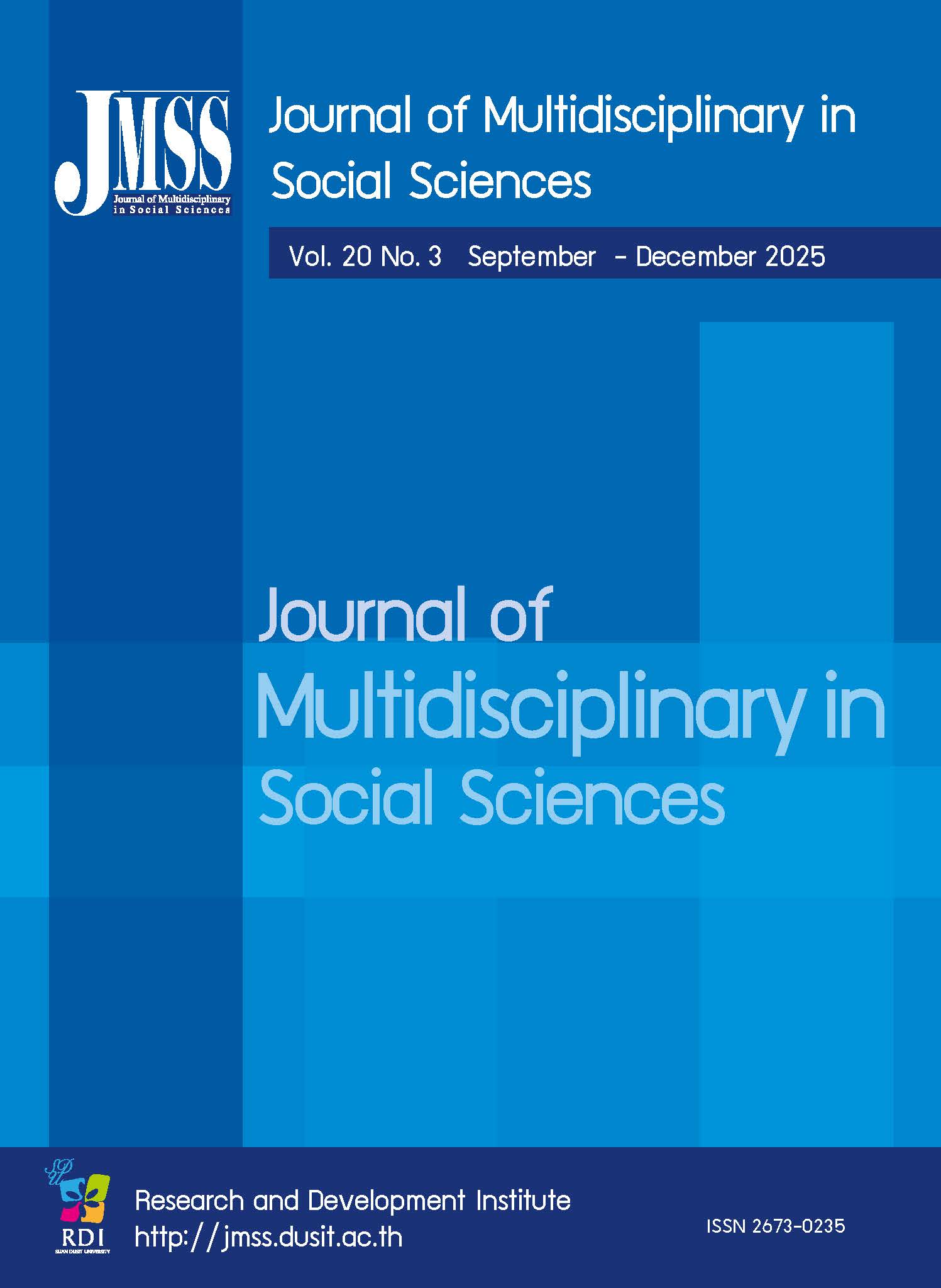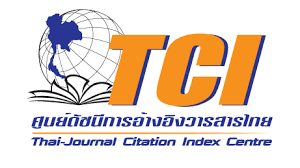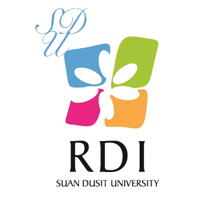Self-Drive Tourism: Unlocking the Potential of the Thailand Riviera
Keywords:
Self-Drive tourism (SDT), Tourism branding, Tourism marketing, Thailand rivieraAbstract
The Thailand Riviera is a key element in the government's strategic plan to boost the nation's economy through targeted tourism development initiatives. Despite its natural beauty and numerous attractions, awareness of the region remains limited, suggesting the need for enhanced promotional efforts. This study aims to develop a proactive marketing and public relations model to promote tourism in the Thailand Riviera, with a focus on self-drive tourism as a case study. A mixed-methods approach was employed, including a survey of 400 tourists to examine their behaviors and perceptions of the Thailand Riviera, as well as in-depth interviews with 24 key informants, including tourists, government officials, and tourism professionals. The EDFR research method was applied to establish a proactive marketing and public relations model, incorporating the insights of 17 experts. A qualitative approach was used to test and verify the proposed self-drive tourism model. The findings suggest that the marketing and tourism promotion strategy for the Thailand Riviera should emphasize self-drive tourism and highlight a distinctive regional identity in alignment with provincial tourism policies under the Thailand Riviera brand. To build brand awareness, mascot marketing should be implemented, positioning the mascot as a tourism ambassador. The proposed self-drive tourism model includes the Thailand Riviera Self-Drive Salt Route in Phetchaburi, connected to the Thailand Riviera Self-Drive Coastal Route in Prachuap Khiri Khan, with community-based tourism activities along the scenic routes. This form of tourism has the potential to reach remote areas, promoting income distribution within local communities and contributing to national economic growth. Overall, this study provides valuable insights into the potential of self-drive tourism as a key driver for promoting tourism in the Thailand Riviera.
References
Aghaei, M., Sahebi, A. G, & Kordheydari, R. (2021). Design and explain the pattern of destination brand value creation strategies in Iranian tourism industry. Journal of Tourism Quarterly, 3(2), 68–97.
Ángeles Oviedo-Garcíaa, M., Vega-Vázquezb, M., Castellanos-Verdugob, M. & Orgaz-Agüerac, F. (2019). Tourism in protected areas and the impact of servicescape on tourist satisfaction, key in sustainability. Journal of Destination Marketing & Management, 12, 74-83.
Alkan, O. (2021). Camp and Caravan Tourism. In Krystev, V., Celik Uguz, S., Efe, R., & Kapluhan, E. (Eds.), Tourism Studies and Social Sciences (pp. 239-253). Sofia: St. Kliment Ohridski University Press.
Blain, C., Levy, S. E., & Ritchie, J. (2005). Destination branding: Insights and practices from destination management organizations. Journal of Travel Research, 43(4), 328-338.
Bui, H.T. & Le, T.A. (2016). Tourist satisfaction and destination image of Vietnam's Ha Long Bay. Asia Pacific Journal of Tourism Research, 21(7), 795-810.
Catherine, H. (2024). Social Marketing. Retrieved April 20, 2024 from https://www.drcath.net/toolkit/social-Marketing.
Cargan, L. (2007). Doing social research. Maryland: Rowman and Littlefield Publishers.
Chiu, W., Zeng, S. & Cheng, P. (2016). The influence of destination image and tourist satisfaction on tourist loyalty: a case study of Chinese tourists in Korea. International Journal of Culture, Tourism and Hospitality Research, 10(2), 223-234.
Cronbach, L. J. (1951). Coefficient alpha and the internal structure of tests. Psychometrika, 16(3), 297-334.
Cruz, S., de Almeida, C., Pintassilgo, P., & Raimundo, R. (2022). Sustainable Drive Tourism Routes: A Systematic Literature Review. Social Sciences, 11(11), 510.
Dedeoğlu, B. B., Van Niekerk, M., Weinland, J., & Celuch, K. (2019). Re-conceptualizing customer-based destination brand equity. Journal of Destination Marketing & Management, 11, 211–230.
DeVellis, R.F. (2017). Scale development: Theory and applications (4th ed.). London: Sage publications.
Flick, U. (2018). The Sage handbook of qualitative data collection. London: Sage publications.
Frías-Jamilena, D. M., Sabiote-Ortiz, C. M., Martín-Santana, J. D., & Beerli-Palacio, A. (2018). The effect of cultural Intelligence on consumer-based destination brand equity. Annals of Tourism Research, 72, 22–36.
Gato, M., Dias, Á., Pereira, L., da Costa, R.L.& Gonçalves, R. (2022). Marketing communication and creative tourism: An analysis of the local destination management organization. Journal of Open Innovation: Technology Market and Complexity, 8(40). 2-23.
Gravetter, F.J. & Forzano, L.B. (2012). Research methods for the behavioral sciences (4th ed.). Belmont: Wadsworth.
Gunturo, B. & Hui, T.K. (2013). Travel satisfaction and revisit intention of Chinese visitors; The case of Singapore. In J. S. Chen (ed.), Advances in hospitality and leisure (pp. 29-47). Bingley: Emerald Group Publishing.
Huanga, S., & Crottsb, J. (2020). Relationships between Hofstede's cultural dimensions and tourist satisfaction: A cross-country cross-sample examination. Tourism Management, 72, 232-241.
Jeuring, J.H. (2016). Discursive contradictions in regional tourism marketing strategies: The case of Fryslân, The Netherlands. Journal of Destination Marketing Management. 2016(5), 65–75.
Kowatanakul, D. (2016). Mekong Ethnic Groups Tourism Development, based on the Authenticity, to Support ASEAN Tourism Plan. Bangkok: Thailand Science Research and Innovation.
Liu, Y., Zhang, Y., Nie, L. (2012). Patterns of self-drive tourists: The case of Nanning City, China. Tourism Management. 33(2012). 225-227.
Ministry of Tourism and Sports. (2019). Domestic Tourism Statistics (Classify by region and province 2017-2019).
Moayyed, F. M, Kordheydari, R., & Sahei, A.G. (2020). The role of knowledge brokers in developing of technical knowledge marketing model for knowledge intensive business service. Management Research in Iran, 24(2), 35–60.
Moon, H. & Han, H. (2019). Tourist experience quality and loyalty to an island destination: the moderating impact of destination image. Journal of Travel & Tourism Marketing, 36(1), 43-59.
Morgan, N., Pritchard, A., & Pride, R. (2011). Tourism places, brands, and reputation management. In N. Morgan, A. Pritchard, & R. Pride, Destination brands: Managing place reputation (3rd ed.) (pp. 3-19). New York: Routledge-Taylor & Francis.
Murphy, P.E. & Murphy, A.E. (2004). Strategic management for tourism communities: Bridging the gaps. UK: Channel View Publications.
Kotler, P. (2007). Social marketing influencing behavior for good (3rd ed.). California: Sage Publication.
Pike, S. (2008). Destination marketing: An integrated marketing communication approach. Oxford: Elsevier.
Pongsakornrungsilp, S. (2019). Guidelines for developing sustainable destination branding of the southern Thailand. Bangkok: Thailand Science Research and Innovation.
Poolpatarachewin, C. (1986). Ethnographic Delphi futures research. Journal of Research Methodology. 1(2), 24-33.
Prideaux, B. and Carson, D. (2011) Drive tourism: trends and emerging market. New York: Routledge.
Rathore, A.S., Sharma, C. (2021). Emotional branding for tourist destinations for the future: A review of ICT tools. In: Sharma, A., Hassan, A. (eds) Future of tourism in Asia (177-200). Singapore: Springer.
Ruel, E.E., Wagner, III, W.E. & Gillespie, B.J. (2016). The practice of survey research: theory and applications. California: SAGE Publications.
Sahebi, A.G., Kordheydari, R., & Kordheydari, M. (2022). Effect of perception of COVID-19 crisis management on destination image and intention to visit. Academica Turistica, 15(3), 291- 305.
TGM. (2024). Social marketing fever. Retrieved 30 April, 2024 from https://thegrowthmaster.com/blog/social-marketing- fever
Viglia, G. & Dolnicar, S. (2020). A review of experiments in tourism and hospitality. Annals of Tourism Research, 80(2).102858.
Wu, M., Pearce, P., & Li, Q. (2018). Chinese behind the wheel: Factors affecting their satisfaction with international self- drive holidays. Journal of Destination Marketing & Management, (September 2018). 12-19.
Yiamjanya, S. (2019). The study of Thai self- driving tourists’ motivation, Travel planning behavior and spatial factor effect on planning behavior and experience for tourism Logistics development: a case study of the northern Thailand routes. Sripatum Chonburi Journal, 15(4), 11-23.
Downloads
Published
How to Cite
Issue
Section
License
Copyright (c) 2024 Journal of Multidisciplinary in Social Sciences

This work is licensed under a Creative Commons Attribution-NonCommercial-NoDerivatives 4.0 International License.








